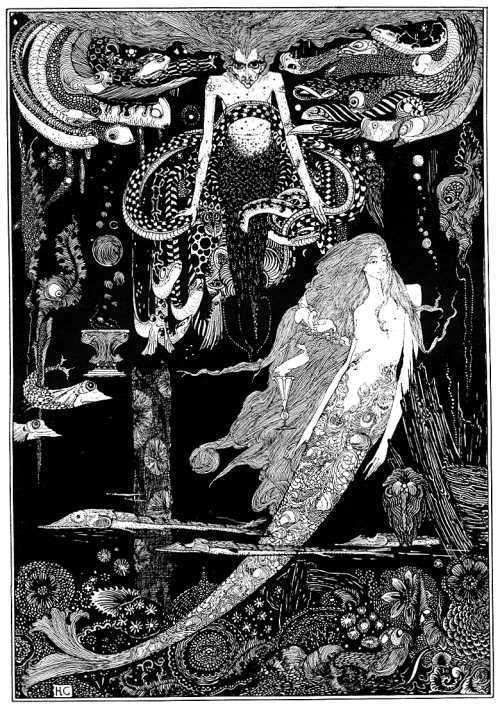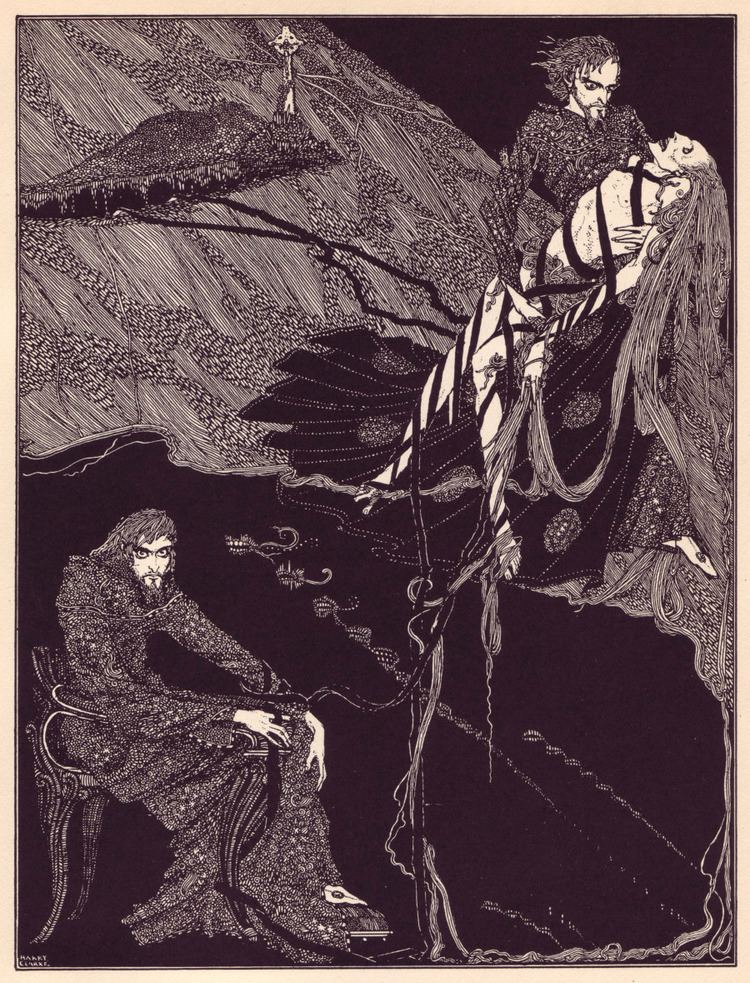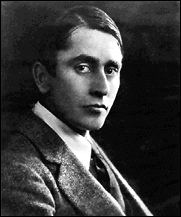Nationality Irish Period Arts and Crafts movement | Role Artist Name Harry Clarke | |
 | ||
Full Name Henry Patrick Clarke Education National College of Art and Design Artwork The Little Sea Maid, Garden Romance, Chambelina | ||
Harry clarke darkness in light the award winning film on the life and work of harry clarke
Harry Clarke (17 March 1889 – 6 January 1931) was an Irish stained-glass artist and book illustrator. Born in Dublin, he was a leading figure in the Irish Arts and Crafts Movement.
Contents
- Harry clarke darkness in light the award winning film on the life and work of harry clarke
- Harry clarke
- Early life
- Book illustration
- Stained glass
- Later years and death
- References

Harry clarke
Early life

Henry Patrick (Harry) Clarke was born 17 March 1889, younger son and third child of Joshua Clarke and Brigid Clarke (née MacGonigal). Church decorator Joshua Clarke moved to Dublin from Leeds in 1877 and started a decorating business Joshua Clarke & Sons, which later incorporated a stained glass division. Through his work with his father, Clarke was exposed to many schools of art but Art Nouveau in particular.

Clarke was educated at the Model School in Marlborough Street, Dublin and Belvedere College, which he left in 1905. He was devastated by the death of his mother in 1903, when he was only 14 years old. Clarke was then apprenticed into his father's studio, and attended evening classes in the Metropolitan College of Art and Design. His The Consecration of St Mel, Bishop of Longford, by St Patrick won the gold medal for stained glass work in the 1910 Board of Education National Competition.

At the art school in Dublin, Clarke met fellow artist and teacher Margaret Crilley. They married on 31 October 1914 and moved into a flat at 33 North Frederick Street. They had three children, Michael, David and Ann.
Book illustration
Clarke moved to London to seek work as a book illustrator. Picked up by London publisher Harrap, he started with two commissions which were never completed: Samuel Taylor Coleridge's The Rime of the Ancient Mariner (much of his work on which was destroyed during the 1916 Easter Rising) and an illustrated edition of Alexander Pope's The Rape of the Lock.
Difficulties with these projects made Fairy Tales by Hans Christian Andersen his first printed work, in 1916. It included 16 colour plates and more than 24 halftone illustrations. This was followed by an illustrations for an edition of Edgar Allan Poe's Tales of Mystery and Imagination: the first version of that title was restricted to halftone illustrations, while a second with eight colour plates and more than 24 halftone images was published in 1923. This 1923 edition made his reputation as a book illustrator, during the golden age of gift-book illustration in the first quarter of the twentieth century. Clarke's work can be compared to that of Aubrey Beardsley, Kay Nielsen, and Edmund Dulac.
It was followed by editions of The Years at the Spring, with 12 colour plates and more than 14 monotone images; (Lettice D'O. Walters, ed., 1920), Charles Perrault's Fairy Tales of Perrault, and Goethe's Faust, with eight colour plates and more than 70 halftone and duotone images (New York: Hartsdale House,1925). The last of these is his most famous work, prefiguring the disturbing imagery of 1960s psychedelia. Two of his most sought-after titles are promotional booklets for Jameson Irish Whiskey: A History of a Great House (1924, and subsequent reprints) and Elixir of Life (1925), which was written by Geofrey Warren. His final book, Selected Poems of Algernon Charles Swinburne, was published in 1928.
Stained glass
Clarke also continued to work in stained glass, producing more than 130 windows, he and his brother Walter having taken over his father's studio after his death in 1921. His glass is distinguished by the finesse of its drawing and his use of rich colours, and an innovative integration of the window leading as part of the overall design, originally inspired by an early visit to see the stained glass of the Cathedral of Chartres. He was especially fond of deep blues. Clarke's use of heavy lines in his black-and-white book illustrations echoes his glass techniques.
Clarke's stained glass work includes many religious windows, but also much secular stained glass. Highlights of the former include the windows of the Honan Chapel in University College Cork; of the latter, a window illustrating John Keats' The Eve of St. Agnes (now in the Hugh Lane Municipal Gallery in Dublin) and the Geneva Window, (now in the Wolfsonian Museum, Miami, Florida, USA). Perhaps his most seen works were the windows he made for Bewley's Café on Dublin's Grafton Street.
Later years and death
Both Harry and his brother Walter were plagued with ill health, in particular problems with their lungs. Clarke was diagnosed with tuberculosis in 1929, and went to a sanatorium in Davos, Switzerland. Fearing that he would die abroad, he began his journey back to Dublin in 1931, but died on this journey on 6 January 1931 in Chur where he was buried. A headstone was erected; but local law required that the family pledge to maintain the grave 15 years after the death. This was not explained to the Clarke family and Harry Clarke's remains were disinterred in 1946 and reburied in a communal grave.
